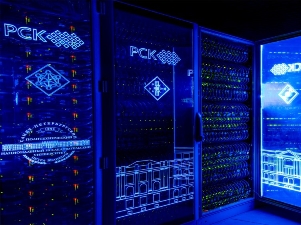As part of the ongoing collaboration between the Gazprom Neft Science and Technology Centre and the Peter the Great St Petersburg Polytechnic University (Polytech) in geological prospecting, company specialists have investigated the possibility of processing data using high-performance computing systems — specifically the Polytech supercomputer, the third largest in Russia.
Software for processing seismic data and constructing hydrodynamic models was installed and tested on the Polytech supercomputer in early 2017, whereupon, assisted by specialists at the Supercomputer Centre, the process of launching programme modules and setting testing objectives was optimised and debugged. Test simulations are the most cutting-edge resource-intensive procedures used in processing onshore seismic data. The software installed at the Supercomputer Centre is compatible with that already in place at the Gazprom Neft Science and Technology Centre, and is used to undertake the most high-performance and resource-intensive tasks in building velocity-depth models, performing deep migration transformations, and multivariate modelling, using large amounts of data. Work on the supercomputer will be carried out remotely from computers at the Gazprom Neft Science and Technology Centre.
Mars Khasanov, Director General of Gazprom Neft’s Science and Technology Centre commented: “The efficiency of oil companies today depends directly on the application of new technologies. The amount of information that any large industrial company has to work with today is colossal. Given the specifics of our industry, we often have to deal with highly diverse and poorly structured data, especially when it comes to complex reserves. Our task is to use the available capacities of the most cutting-edge computer systems for processing information; using a supercomputer is just one of the solutions to such problems”.
31 Декабря 2025 | среда | 10:33


